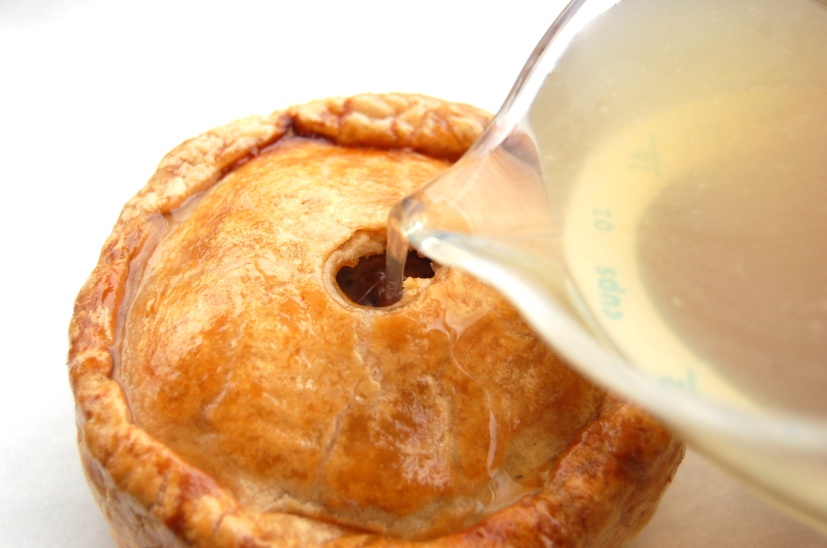What's the Difference Between American vs. British "Hot Water" Pie Crust

Reader L wants to know, since we’re talking pie, what the difference is between a standard American pie crust and a British “hot water”-style pie crust of the type usually used for pork pies. Thank you for that, L! You can think of it this way: an American pie crust is primarily designed to be eaten. It’s rich, flaky and tender, easy on the teeth and the taste buds, but something of a weakling. If it didn’t have a pie plate top support it, it would collapse in a heap.
Hot water pastry is a descendant of the old-style “coffin” pie crusts that I referenced below. It functions more like a free-standing container, though compromises have been made such that you can eat it if you want to. It’s richer than its bruiser ancestors and quite a bit more toothsome, but still a lot tougher than an American-style crust. If it weren’t it would never be able stand alone without a form to support it, much less be able to hold a volume of liquid (as show above) without leaking.
It can do all that because its structure is much more uniform than an American-style crust. If you have a look at the posts and compare how they’re made, you can see that American crusts are made by “rubbing” cold fat into a mass of flour. This process creates uneven pockets of fat in the finished dough. It’s these pockets, which are flattened when the dough is rolled, that create the American crust’s trademark flakiness. The fat pockets become layers, not unlike the layers in a laminated dough. When heated, they push the dough above and below them apart.
The fat pockets also do something else: they undermine gluten formation, preventing proteins from hooking up with each other and forming a tough mesh. The small amount of water also helps to deprive the gluten of the water it needs to activate. Put it all together and the crust is not only flaky but very tender, a true pleasure to eat. All this tenderness and flakiness comes at a cost, however, as the uneven, gluten-compromised structure makes it very weak in spots, and potentially leaky.
Take a look at the hot water crust and you’ll see that it’s made very differently. In this process a mixture of hot, melted fat and water is added the flour and thoroughly mixed in. It’s enough to make an American crust maker fall over faint. However the result is a very uniform mixture of fat, water and flour. That uniformity translates to structure and, by extension, strength. Indeed it’s so uniform that you can pour a liquid gelatin mixture into it and it won’t leak. Being quite rich it’s not as strong as the pie coffins of old, so you can actually chew it and eat it, but it’s a very different experience than an American pie. Hope that helps, L
Source: joepastry.com/2015/american-vs-british-hot-water-pie-crust
